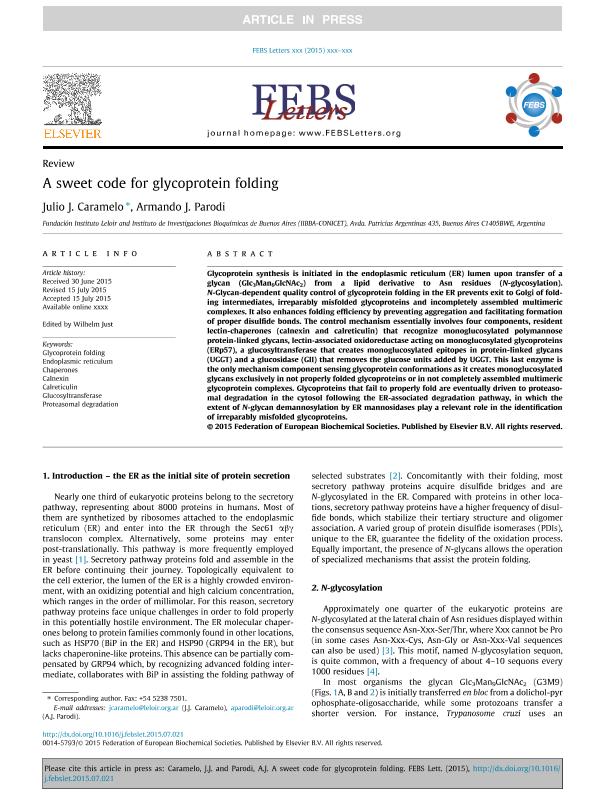Artículo
A sweet code for glycoprotein folding
Fecha de publicación:
06/2015
Editorial:
Elsevier Science
Revista:
FEBS Letters
ISSN:
0014-5793
Idioma:
Inglés
Tipo de recurso:
Artículo publicado
Clasificación temática:
Resumen
Glycoprotein synthesis is initiated in the endoplasmic reticulum (ER) lumen upon transfer of a glycan (Glc3Man9GlcNAc2) from a lipid derivative to Asn residues (N-glycosylation). N-Glycan-dependent quality control of glycoprotein folding in the ER prevents exit to Golgi of folding intermediates, irreparably misfolded glycoproteins and incompletely assembled multimeric complexes. It also enhances folding efficiency by preventing aggregation and facilitating formation of proper disulfide bonds. The control mechanism essentially involves four components, resident lectin-chaperones (calnexin and calreticulin) that recognize monoglucosylated polymannose protein-linked glycans, lectin-associated oxidoreductase acting on monoglucosylated glycoproteins (ERp57), a glucosyltransferase that creates monoglucosylated epitopes in protein-linked glycans (UGGT) and a glucosidase (GII) that removes the glucose units added by UGGT. This last enzyme is the only mechanism component sensing glycoprotein conformations as it creates monoglucosylated glycans exclusively in not properly folded glycoproteins or in not completely assembled multimeric glycoprotein complexes. Glycoproteins that fail to properly fold are eventually driven to proteasomal degradation in the cytosol following the ER-associated degradation pathway, in which the extent of N-glycan demannosylation by ER mannosidases play a relevant role in the identification of irreparably misfolded glycoproteins.
Archivos asociados
Licencia
Identificadores
Colecciones
Articulos(IIBBA)
Articulos de INST.DE INVEST.BIOQUIMICAS DE BS.AS(I)
Articulos de INST.DE INVEST.BIOQUIMICAS DE BS.AS(I)
Citación
Caramelo, Julio Javier; Parodi, Armando José A.; A sweet code for glycoprotein folding; Elsevier Science; FEBS Letters; 589; 22; 6-2015; 3379-3387
Compartir
Altmétricas




